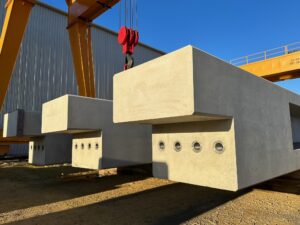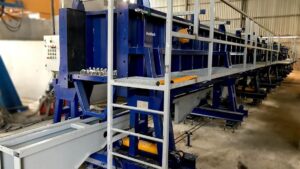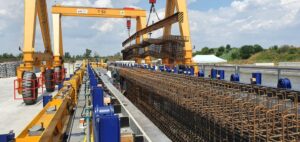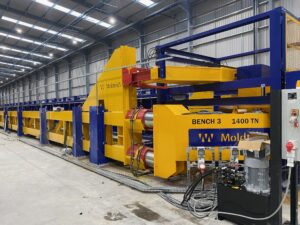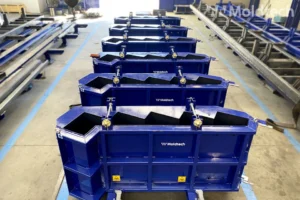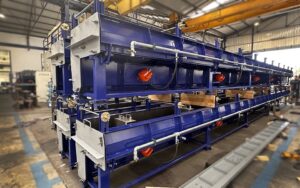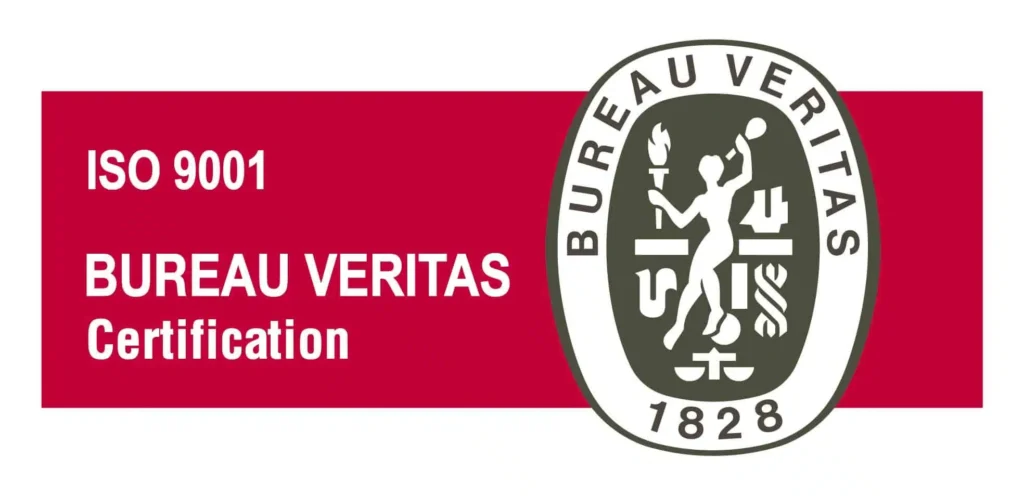Tilting tables are essential in the precast concrete industry, as they allow for the efficient production of large, flat concrete panels. Firstly, these tables enable concrete to be poured and cured horizontally. Subsequently, the panels are tilted to a vertical position for easy removal. This process significantly improves production speed. Moreover, it reduces labor requirements and ensures a high-quality surface finish on concrete panels. Additionally, the use of tilting tables minimizes errors. Consequently, it enhances productivity compared to traditional casting methods.
Moldtech ensures the quality of its precast concrete mouldings through a meticulous manufacturing process that includes design, material selection, fabrication, and finishing. Initially, they utilize advanced software for precise designs. Subsequently, they adhere to stringent quality standards, including dimensional accuracy and durability. Furthermore, regular inspections and testing are conducted to ensure that each mould meets industry benchmarks. Consequently, this guarantees the production of consistent and high-quality precast elements.
Precast concrete offers numerous advantages over traditional on-site casting methods. Firstly, these include superior strength, durability, and quality control, as the components are manufactured in a controlled environment. Additionally, precast elements are produced with precise dimensions and finishes, thereby reducing the potential for errors. Moreover, the off-site production of precast concrete elements saves time, reduces labor costs, and minimizes environmental impact. Consequently, this makes it a more efficient and cost-effective construction method.
Moldtech integrates sustainability into its manufacturing processes by using recyclable materials and developing reusable mould systems. Firstly, their production methods minimize waste and promote efficient resource use, thereby contributing to a lower environmental impact. Additionally, by adhering to green building practices and supporting sustainability initiatives, Moldtech ensures that its products meet modern environmental standards. Consequently, this commitment contributes to sustainable construction projects.
Tilt-up concrete construction involves casting large concrete panels on-site and then lifting them into place to form building walls. This method is efficient and cost-effective, making it ideal for commercial and industrial buildings. Workers pour panels on a flat surface, let them cure, and then lift them vertically using cranes. This technique reduces labor costs, speeds up construction, and allows the use of local materials. Additionally, tilt-up construction supports various architectural styles and is commonly used for warehouses, retail centers, offices, and schools.
Moldtech's tilting tables feature a robust frame, hydraulic or mechanical tilting mechanisms, and a smooth casting surface. Additionally, these tables are designed for versatility and efficiency, offering options for fixed, collapsible, or height-adjustable sides. Moreover, they can include optional vibration systems to optimize panel production and advanced heating systems to speed up concrete hardening. Consequently, these features ensure the production of high-quality concrete panels with minimal defects. Therefore, using Moldtech's tilting tables enhances both the efficiency and quality of precast concrete projects.
Quality control is crucial in precast concrete production to ensure the structural integrity, durability, and aesthetic appeal of the final products. Firstly, Moldtech implements regular inspections, testing, and adherence to stringent standards throughout the production process. This includes monitoring the curing process, checking dimensional accuracy, and conducting load tests. Furthermore, effective quality control practices ensure that the precast elements meet the highest standards of excellence and safety. Consequently, these rigorous procedures help maintain the quality and reliability of Moldtech’s precast concrete products, ensuring they fulfill both functional and aesthetic requirements.
Precast concrete uses reusable molds in a controlled factory environment, enhancing quality control, efficiency, and durability. After curing, workers transport the elements to the construction site for quick assembly. This method allows for simultaneous site preparation, reducing construction time while ensuring consistent quality with precise dimensions. Additionally, it minimizes waste and supports recycling, promoting sustainability. Precast concrete proves versatile, fitting walls, floors, beams, and decorative elements in commercial buildings, residential projects, and infrastructure like bridges and tunnels. By choosing precast concrete, you gain a faster, more efficient construction process with high-quality, durable components, reducing environmental impact








